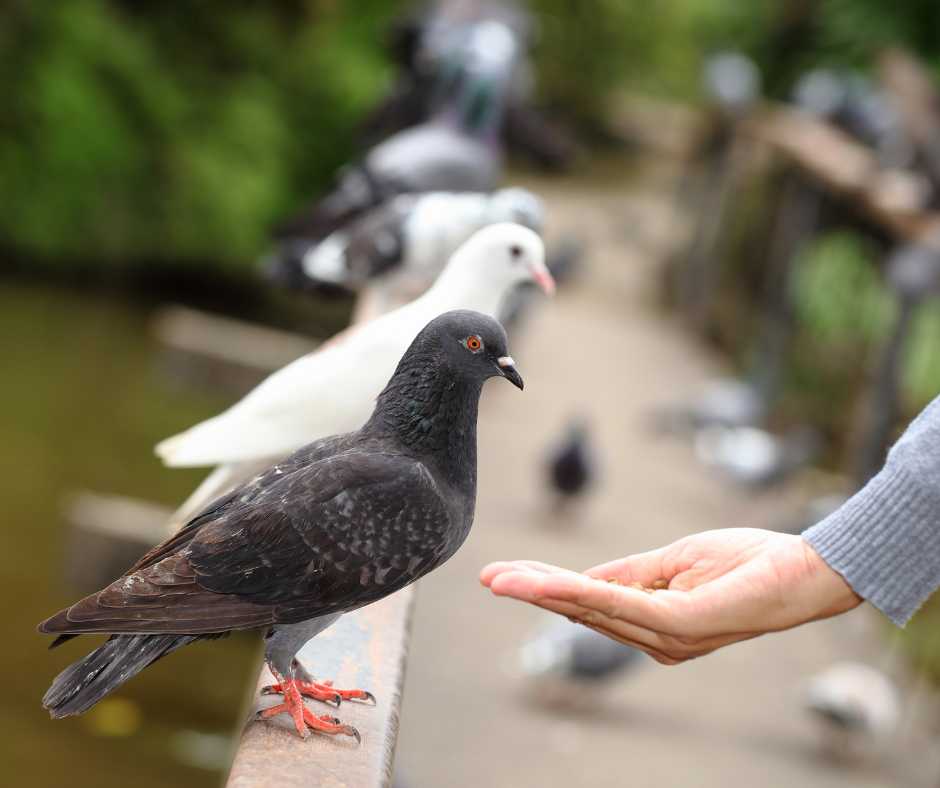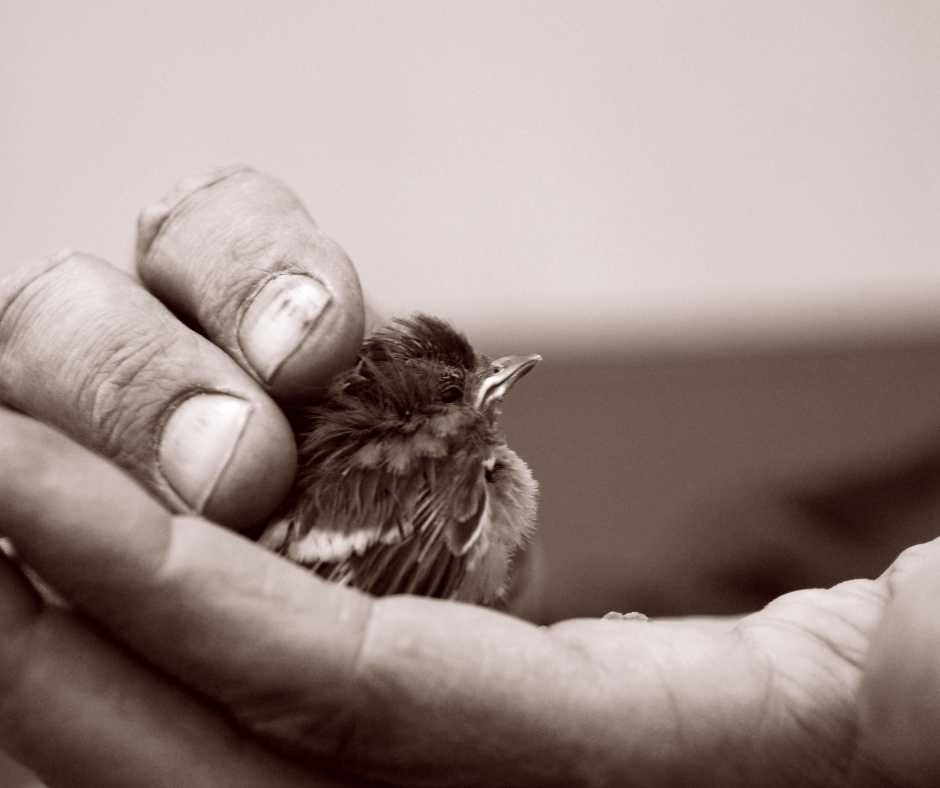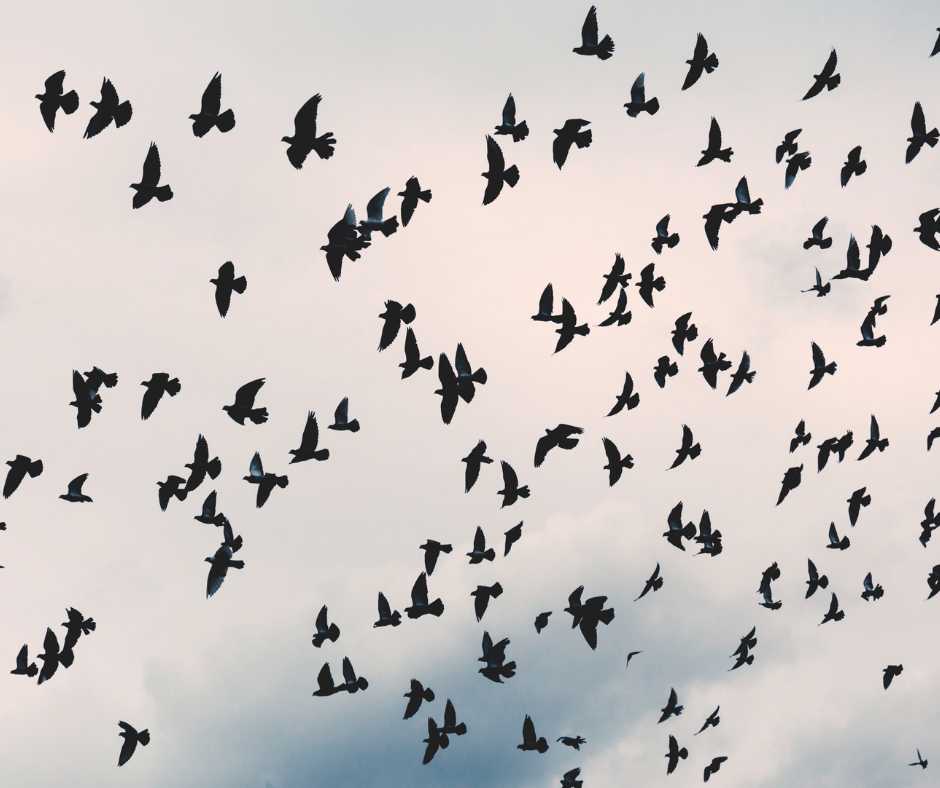Have you ever wondered why birds might dart away as you approach? It turns out, ‘Are birds scared of humans’ is more than just a simple question.
Birds instinctively fear humans, viewing us as potential threats. This fear varies with urban birds often adapting, while rural birds remain cautious. Habituation and positive human interactions can reduce this fear, as birds show through flight responses and body language.
This blog will guide you through understanding these natural responses and how we can positively impact our feathered neighbors, creating a friendlier environment for both humans and birds. Join us in exploring the fascinating world of birds and their perception of humans.
Why Are Birds Scared of Humans?
Birds instinctively fear humans as a survival mechanism, viewing us as potential threats. This deep-rooted instinct, stemming from being smaller and seeing humans as unpredictable giants, triggers a ‘flight’ response for safety. Birds’ caution is hardwired, helping them navigate a world where safety is paramount.
Let’s delve deeper into how this perception shapes their interactions with us, the towering figures in their world.
Instinctive Fear: A Survival Mechanism
Have they ever wondered why birds seem to view us as the ‘bad guys’? It’s all about survival. Birds, those feathered survivors from the dinosaur era, have a deep-rooted instinct to see us as potential threats. Imagine living in a world where almost everyone is bigger than you!
That’s the bird’s reality with us humans around. We’re like the giants of their world. This instinct isn’t just random fear; it’s a survival mechanism that’s been part of their natural wiring for ages.
It’s like having a built-in alarm system that goes off whenever something big (that’s us!) is nearby. The Audubon Society has some incredible insights into these bird behaviors (Audubon Society).

Humans as Unfamiliar Giants in Birds’ Eyes
From a bird’s-eye view, we humans must seem like walking skyscrapers! Our towering height and often unpredictable movements can be really intimidating. Imagine how you’d feel if a creature many times your size suddenly came close to you. Kinda scary, right?
Birds can’t tell if we’re friendly giants or if we mean harm. So, what’s their safest bet? To flap those wings and fly away, of course! They’re playing it safe in a world where being cautious means staying alive. It’s not that they don’t like us; they’re just hardwired to be wary of anything big and unfamiliar.
In a nutshell, birds’ fear of us is a mix of instinctive caution and seeing us as unpredictable giants. It’s their way of navigating a world where safety comes first, and taking risks could mean trouble. So next time you see a bird darting away, remember, it’s not personal – they’re just following their survival playbook!
How Do Birds View Human Presence?
Birds view human presence through a spectrum of fear and fascination. Urban birds, like pigeons, often adapt to city life, seeing humans as potential food sources and acting bolder. In contrast, rural birds are more cautious and skittish, perceiving humans as potential threats due to less frequent encounters.
Let’s delve deeper into this comparison of urban and rural birds, understanding how their worlds shape their views of us.
The Spectrum of Fear and Fascination
Isn’t it fascinating how birds react to us? It’s like they have their little personalities. Some birds are bold adventurers, almost like they’re playing a game of ‘chicken’ with us, seeing how close they can get.
Take crows and ravens, for example – these smarty-pants are known for their curiosity and intelligence. They often watch us with a keen eye, perhaps even trying to figure us out.
On the other hand, many birds are super shy, almost like they think we’re the boogeyman.
Have you ever seen a sparrow dart away as soon as you take a step closer? That’s their natural ‘stranger-danger’ alarm going off. It’s really a spectrum – some are fascinated by us, while others would rather watch from a safe distance.
Urban vs. Rural Birds: A Tale of Two Environments
Now, let’s talk about city birds versus country birds. Birds in the city? They’re the cool kids on the block. They’ve seen it all – cars, noise, people, and hey, maybe even a hot dog or two dropped on the sidewalk.
These birds have learned that humans can mean a free lunch, so they’re often bolder. Pigeons, especially, are like the streetwise gang of the bird world, often hanging around waiting for a snack.
Then there are the rural birds. These guys are more like the cautious country folk, not used to the hustle and bustle of city life. Out there, where it’s quiet, and there are fewer people, birds tend to be more skittish.
They’re not used to humans and often see us as a big, scary mystery. So, when we show up, they prefer to keep their distance just to be safe. It all boils down to their environment and what they’re used to.
If you’re curious about how different environments affect bird behavior, the Cornell Lab of Ornithology has some top-notch info (Cornell Lab of Ornithology).

Are Some Birds Naturally Brave Around Humans?
Some birds are not naturally brave around humans, but they can become accustomed through habituation. This process involves birds learning that humans are not a threat through repeated, non-threatening interactions. Positive experiences with humans, such as gentle behavior and feeding, further help birds associate humans with safety and good things.
Let’s explore how these interactions shape their behavior and trust in us.
Adapting to Human Proximity: A Matter of Habituation
Have you ever noticed how some birds don’t seem to mind us humans much? It’s not that they’re naturally braver but more about getting used to us. This process, called habituation, is similar to how we get used to the sound of traffic in the city.
Birds, through repeated, non-threatening interactions with humans, learn that we aren’t monsters out of a fairy tale. They observe us, gather their little birdie intel, and, over time, realize we’re not there to harm them.
It’s incredible to see how birds, like those often visiting park benches or backyard feeders, gradually change their tune about us humans. They start to see us more as part of the scenery rather than a threat to flee from.
The Role of Positive Human Interaction
Now, this is where things get interesting! Positive human interaction plays a huge role in easing birds’ fear of us. When birds experience gentle, respectful behavior from humans, they start to lower their guard. Think of it like making a new friend.
If you’re nice to them, they’ll want to hang out with you more. The same goes for birds. If we’re calm and quiet and offer them a tasty treat, they start associating us with good things. It’s like we’re telling them, “Hey, we’re cool, no need to be scared!”
Over time, these positive experiences can transform even the most skittish birds into our feathered friends. It’s a slow but rewarding process, seeing a bird go from flying away at the mere sight of us to bravely hopping around our gardens or perching nearby.

Can Wild Birds Develop Trust in Humans? – A Step-by-Step Guide
Ever thought about making friends with a bird? It’s more plausible than it sounds! Building trust with our feathered friends is a journey of patience and respect. Here’s a simple guide to get you started:
- Be a Silent Observer: Hang out near birds without making a fuss. Just like us, birds need to feel safe before they can trust.
- Regular, Gentle Presence: Make your visits a routine. The more they see you, the more familiar you become.
- Keep Movements Slow and Predictable: Sudden moves can startle them. Imagine how a slow, gentle giant would move – that’s your role.
- Offer Treats: Who doesn’t like a snack? Bird-safe treats can be a great ice-breaker.
- Talk Softly: If you speak, use a soft, gentle tone. It can be soothing and help them see you as friendly.
- Respect Their Space: If they retreat, let them. Trust builds on respect and choice.
Remember, each bird is different, so what works for one might not work for another. Patience is your best friend in this process!
Read more: How to Preserve Wild Bird Eggs
How Do Birds React When Scared?
When scared, birds often react with a ‘flight’ response, quickly flying away from danger. In protective scenarios like nest defense, they may demonstrate ‘fight’ behaviors, including loud calls and swooping. Their fear is also communicated through body language and vocal signals, like sharp chirps and anxious wing flaps.
Let’s explore how these avian communications give us insight into their world of fear and caution.
Flight or Fight: Birds’ Natural Defense Mechanisms
Have you ever seen a bird suddenly take off when you get too close? That’s their “flight” mechanism kicking in. When birds feel threatened, their go-to response is usually to fly away – and fast!
It’s like their panic button. But it’s not always about making a quick escape. Sometimes, especially when they’re defending their nests or little chicks, they switch to “fight” mode.
This could mean anything from loud, warning calls to bravely swooping down towards what they see as a threat – yep, sometimes that’s us! It’s their way of saying, “Back off!”
Birds, just like us, have different ways of dealing with scary situations and understanding this can help us be more mindful around them.
Understanding Birds’ Body Language and Vocal Signals
Birds aren’t just about chirping and tweeting; they’re actually telling us a whole lot through their body language and sounds.
Picture this: you’re walking in a park and hear a sudden, sharp chirp from a nearby tree. That’s likely a bird’s way of saying, “Alert! Something’s up!” And those quick flaps of wings? That could be a sign that the bird is pretty nervous.
Observing these little cues is like learning a new language, bird language!
By understanding what their different actions and sounds mean, we get a peek into how they’re feeling – scared, nervous, or even just cautious.
It’s all about paying attention and learning to ‘speak’ birds through their body language and vocal cues. This way, we can ensure we’re not unintentionally causing our feathered friends any stress.
What Can We Learn From Birds’ Fear of Humans?
Birds’ fear of humans highlights our impact on them, urging us to act respectfully by keeping our distance and reducing noise. Simple actions like pet control, installing bird feeders, and planting native flora can create a safer, bird-friendly environment.
Let’s explore these practical steps to foster a more bird-friendly world.
Insights into Bird Behavior and Human Impact
Ever wonder what a bird thinks when it sees us? Well, their fear can actually teach us a lot! When birds get scared and fly away, it’s not just them being dramatic. It’s a sign that we might be too close or too loud.
This tells us that our actions, even when we’re just walking through a park or hiking in the woods, have a significant impact on these little creatures. It’s like a reality check, reminding us to tread lightly and respect their space.
By understanding their fear, we start to see the world from their perspective, realizing that we share this planet with all sorts of life. So, next time you’re out and about, remember that how you act can either scare our feathered friends away or let them live their birdy lives peacefully.
Steps Towards a More Bird-Friendly World
Creating a bird-friendly world doesn’t require a superhero cape, just some thoughtful changes. First off, keep an eye on your furry pets, especially cats, when they’re outdoors. Cats are natural hunters and can pose a significant threat to birds.
Next, think about how you can make your backyard a haven for birds. It could be as simple as setting up a bird feeder or planting native shrubs and trees. And when you’re out in nature, be a considerate guest.
Keep noise to a minimum, stay on the paths, and skip that selfie with the birds. Need some more ideas? The National Wildlife Federation (National Wildlife Federation) has a bunch of tips on turning your garden into a bird paradise. Small steps like these can make a big difference in making our world more welcoming to birds.
You may also read: How to Make Your Yard Bird Friendly

People Also Asked
Can birds really remember human faces?
You bet! Some birds, like crows, are known to remember human faces, especially if they had a bad experience with that person. Talk about holding a grudge!
What’s the best way to attract birds to my garden?
Provide a mix of food, water, and shelter. Bird feeders and baths are a great start. Planting native plants also helps offer natural food and nesting spots.
Are there any birds that are naturally friendly to humans?
Some bird species, like chickadees and certain sparrows, are known for being more fearless and friendly towards humans, mainly if they’re used to being around us.
How can I tell if a bird is stressed or scared?
Look for signs like rapid movement, loud or frequent calls, or if they fly away suddenly. These are good indicators that a bird isn’t comfortable with the current situation.
Wrap Up
Alright, let’s wrap this up! Our journey through the world of birds has shown us just how incredible these creatures are and how sensitive they can be to our actions.
By understanding their fear and reactions to us, we’ve unlocked the first step in creating a more welcoming and safe environment for them. It’s all about respect and understanding – simple changes in our behavior can make a big difference.
So, next time you spot a bird, remember that we’re all part of this big, beautiful world together. Let’s do our part to make it a friendly place for our feathered friends, ensuring our shared spaces are places where both humans and birds can thrive.






